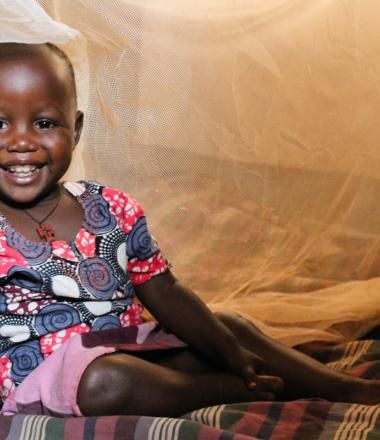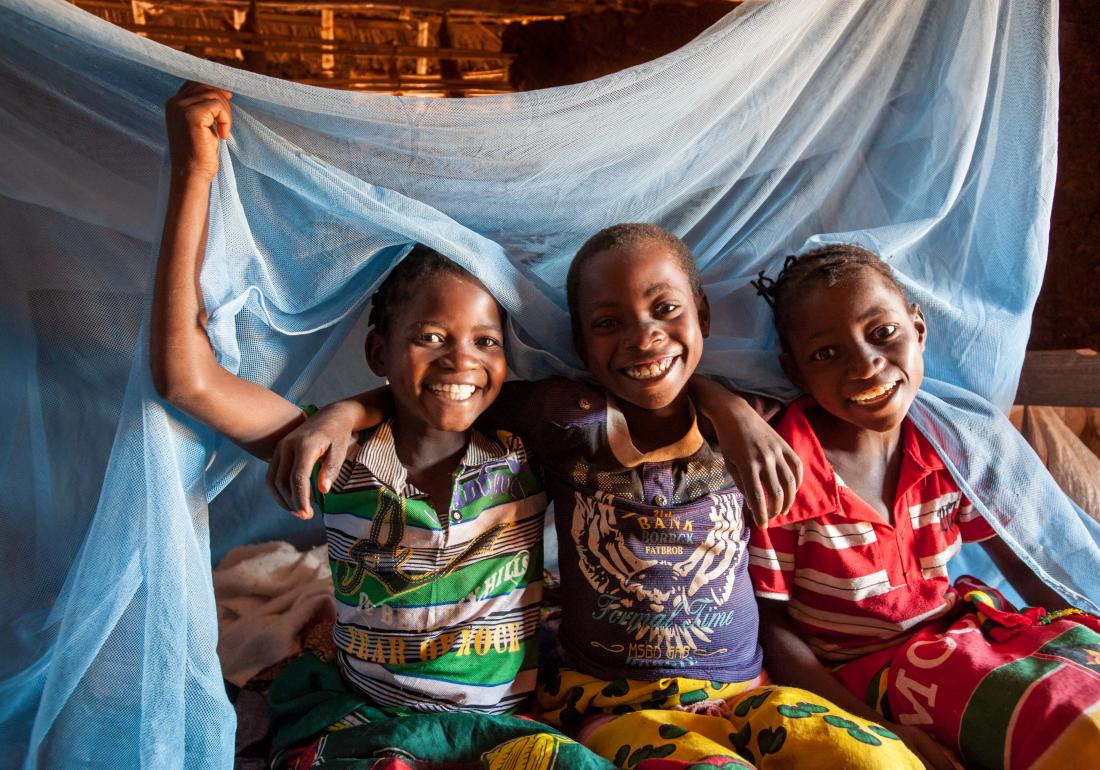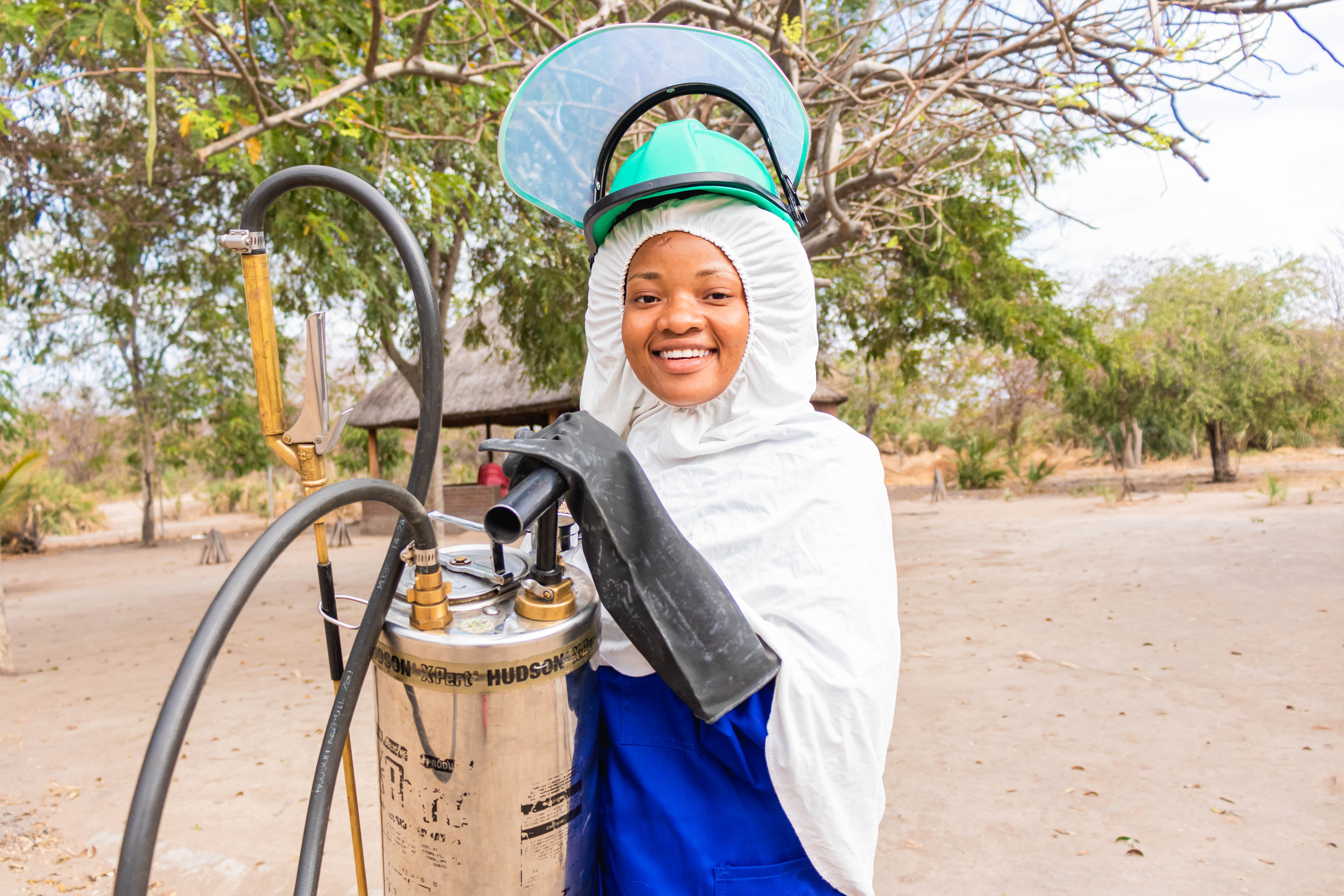
Winning the Fight Against Malaria
Malaria Programming
Though eliminated in some parts of the world decades ago, malaria remains a significant public health problem threatening half the world’s population. In 2022, there were 249 million malaria cases globally, leading to 608,000 deaths (WHO). The availability of simple, cost-effective interventions to prevent and treat the disease, including insecticide-treated mosquito nets (ITNs), has led to a 60 per cent decrease in malaria mortality rates since 2000, but progress in recent years has stalled, with the number of cases worldwide remained virtually unchanged at 229 million over each of the past four years.
Malaria disproportionately affects the poor and most marginalized communities as they are high risk and have the least access to effective services. Due to more vulnerable immune systems, children under 5 years old, pregnant women, and people living with HIV and AIDS are more susceptible to malaria. In 2022, children under 5 years accounted for 76% of all malaria deaths worldwide. A child dies of malaria nearly every minute (UNICEF).

World Vision is following through on its commitment to fight malaria until it is defeated. Prevention and treatment for malaria is woven into our core global health strategy. In areas where malaria is an issue we work to assure that families – especially mothers and children under age 5 – are sleeping under an insecticide-treated mosquito net. We also work to strengthen health systems to make sure families have access to proper diagnosis, treatment and care, including Integrated Community Case Management (iCCM) where diagnosis and treatment is carried out by community health workers. Other interventions include promotion of intermittent presumptive treatment for pregnant women, indoor residual spraying of insecticides (IRS), and environmental hygiene interventions where we address the sanitation issues that create breeding grounds for malaria-carrying mosquitoes.
THE MALARIA VACCINE
In October 2021, the World Health Organization recommended that the RTS,S malaria vaccine be used for the prevention of malaria in children living in regions with moderate to high transmission, based on results of the ongoing research pilot project that has reached more than 1 million children in Ghana, Kenya and Malawi since 2019. While the pilot projects are ongoing to 2023, World Vision fully supports promotion of the RTS,S vaccine because it has proven to be safe, effective, feasible and practical.
WORLD VISION'S MALARIA INVESTMENTS THROUGH THE GLOBAL FUND
In 2022, World Vision:
- World Vision supported national malaria programmes in six countries (Angola, Central African Republic (CAR), Malawi, Mozambique, Thailand, and Zimbabwe), reaching almost 27 million direct beneficiaries. Specific interventions included social and behaviour change, prevention, testing, and treatment of malaria through integrated public-private sector case management.
- World Vision Global Fund malaria programmes alone saved an estimated 414,5674 lives of children under age five.
- In Malawi, WV reached 391,643 (96.3% of target) households with indoor residual spraying, benefitting over 1.9 million people.
- In Malawi, World Vision trained and supported 2,509 community leaders to conduct door-to-door indoor residual spraying awareness sessions, talk about the benefits and homeowners’ roles, and address individual myths and misconceptions concerning the campaign.
- In Mozambique, World Vision collaborated with Viamo in the use of mobile technology to scale up social and behaviour change campaigns.
- The programme in Mozambique trained 6,000 teachers and volunteers remotely and broadcast 68,820 key messages on malaria prevention, reaching 32,610 unique listeners.
- Community Health Workers (CHWs) provided rapid testing and first-line treatment to homes in underserved rural communities far from health clinics.
- In 2021, 15,870,244 (80% of target) people suspected of having malaria received a parasitological test conducted by Community Health Workers (CHWs) at the community level.
- CHWs treated 1.66 million confirmed cases of malaria with first-line antimalarial drugs in the community.
- In addition, 7.4 million and 248,157 cases of malaria were tested and treated at public and private health facilities, respectively.
- In Central African Republic and Zimbabwe, World Vision distributed 258,221 insecticide-treated mosquito nets (ITNs) (52.5% of the annual target) through a small-scale campaign at a ratio of one net per two individuals, directly benefitting approximately 516,442 individuals.
In the past five years, World Vision's Global Fund programmes have achieved the following:
- 54,533,053 million insecticide-treated mosquito nets distributed
- 1,421,350 households received indoor residual spraying for malaria vector control
- 6,519,803 suspected malaria cases received a parasitological test at the community level
- 6,521,416 confirmed malaria cases received first-line antimalarial treatment in the community

Read more:
What is malaria? Facts, Symptoms and what World Vision is doing
Digital Health Factsheet: Fighting malaria with digital health tools in Angola
Integrated Community Case Management - a World Vision project approach
Stories from the Field
- Women leading charge to end malaria in Malawi
- Delilah survives malaria thanks to community health worker in Uganda
- Bringing health care closer to people: How Community Health Workers are proving to be the key to eliminating malaria in Zambia
- Meet the women daring to end malaria in Malawi
- Halima and Anifa thrive in school as malaria cases fall in Malawi
- Children, Global Fund, laud WV’s Indoor Residual Spraying campaign in Malawi
- Global Fund country team lauds progress in malaria fight in Malawi
- World Vision launches 2021 campaign to fight malaria in Malawi
- Fighting malaria in the midst of COVID-19 in Malawi
- World Vision welcomes historic malaria vaccine as significant breakthrough for the most vulnerable children in Southern Africa